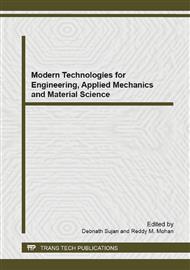p.165
p.172
p.179
p.184
p.189
p.194
p.198
p.203
p.208
On the Proportionality of Damage Rule in Finite Element Simulations of the Ductile Failure
Abstract:
Extended Mohr–Coulomb criterion which is uncoupled, therefore the plasticity is not influenced by the damage, was selected and calibrated. Experiments on the aluminum alloy 2024-T351 were carried out. Further, the impact of the damage rule proportionality was investigated. The damage exponent was sequentially held 1, 2 and 3, respectively. Therefore, the influence of the damage rate on the damage failure in finite element simulations was examined. Numerical simulations of the tensile test of smooth and notched cylindrical specimens and flat grooved specimen were performed. It is also shown that there is inability to predict slant fracture by uncoupled models for flat grooved specimen and in the final phase of tensile tests of cylindrical specimens.
Info:
Periodical:
Pages:
189-193
Citation:
Online since:
June 2014
Authors:
Keywords:
Permissions:
Share:
Citation:


